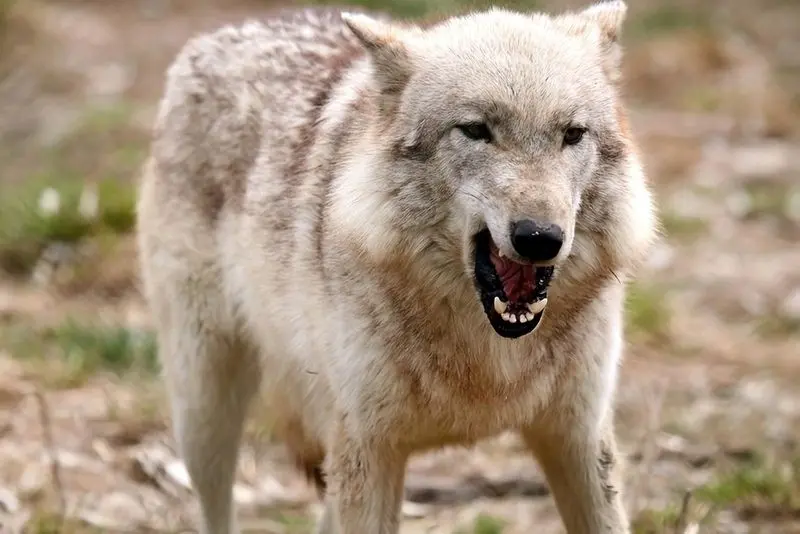 When dogs hide their toys, it can be a fascinating behavior that reflects several aspects of canine psychology and biology. One primary reason is evolutionary instinct; in the wild, animals must conserve resources for lean times. By hiding toys, dogs may mimic this survival strategy, storing items... ↪ Read more
When dogs hide their toys, it can be a fascinating behavior that reflects several aspects of canine psychology and biology. One primary reason is evolutionary instinct; in the wild, animals must conserve resources for lean times. By hiding toys, dogs may mimic this survival strategy, storing items... ↪ Read more Veterinary Drug Handbook (VDH) is the reference veterinarians turn to when they want an independent source of information on the drugs that are used in veterinary medicine today.
-
 Is veterinary Liniment Gel safe for humans?
Is veterinary Liniment Gel safe for humans? -
 Giving Your Cat A Pill
Giving Your Cat A Pill -
 Dog Aggression
Dog Aggression -
 Dogs May Help Boost Infant Health
Dogs May Help Boost Infant Health -
 Animal-Assisted Therapy, Veterinary Social Work, & Social Work With People & Pets in Crisis
Animal-Assisted Therapy, Veterinary Social Work, & Social Work With People & Pets in Crisis -
 On-demand veterinary service gives advice on poorly pets
On-demand veterinary service gives advice on poorly pets -
 Should we stop throwing sticks for dogs?
Should we stop throwing sticks for dogs? -
 Can breathing in cat hair be harmful?
Can breathing in cat hair be harmful? -
 What does PU/PD mean in veterinary medicine?
What does PU/PD mean in veterinary medicine? -
 Bill calls for ban on sales of dogs, cats in Maine pet stores
Bill calls for ban on sales of dogs, cats in Maine pet stores -
 Common Meanings Of Cat Behavior
Common Meanings Of Cat Behavior -
 What does DVM stand for in veterinary?
What does DVM stand for in veterinary? -
 Curing Bad Cat Breath
Curing Bad Cat Breath -
 New Tracking Tool for Pathogen Investigators
New Tracking Tool for Pathogen Investigators -
Can binturongs be kept as pets?
-
 How long do instruments stay sterile after autoclaving veterinary?
How long do instruments stay sterile after autoclaving veterinary?
Why do dogs bury bones or toys?
 When dogs hide their toys, it can be a fascinating behavior that reflects several aspects of canine psychology and biology. One primary reason is evolutionary instinct; in the wild, animals must conserve resources for lean times. By hiding toys, dogs may mimic this survival strategy, storing items... ↪ Read more
When dogs hide their toys, it can be a fascinating behavior that reflects several aspects of canine psychology and biology. One primary reason is evolutionary instinct; in the wild, animals must conserve resources for lean times. By hiding toys, dogs may mimic this survival strategy, storing items... ↪ Read more Can hamsters get diabetes?
 Hamster Diabetes: Understanding the Risk and Management
Diabetes mellitus is a condition characterized by high blood sugar levels due to insufficient insulin production or resistance. While commonly associated with humans and dogs, it's important to note that hamsters can also develop diabetes.... ↪ Read more
Hamster Diabetes: Understanding the Risk and Management
Diabetes mellitus is a condition characterized by high blood sugar levels due to insufficient insulin production or resistance. While commonly associated with humans and dogs, it's important to note that hamsters can also develop diabetes.... ↪ Read more Can kinkajous be kept as pets?
 When considering whether kinkajous can be kept as pets in the United States, it is essential to understand that regulations vary significantly from state to state. Kinkajous are small mammals native to Central and South America, often mistaken for a type of primate due to their appearance but are... ↪ Read more
When considering whether kinkajous can be kept as pets in the United States, it is essential to understand that regulations vary significantly from state to state. Kinkajous are small mammals native to Central and South America, often mistaken for a type of primate due to their appearance but are... ↪ Read more Why do cats have whiskers?
 The Functionality of Cat Whiskers
Understanding the purpose of a cat's whiskers involves recognizing their multifaceted roles in a cat's life. Primarily, whiskers serve as tactile sensors, aiding cats in navigating their environment with remarkable precision. These specialized hairs are deeply... ↪ Read more
The Functionality of Cat Whiskers
Understanding the purpose of a cat's whiskers involves recognizing their multifaceted roles in a cat's life. Primarily, whiskers serve as tactile sensors, aiding cats in navigating their environment with remarkable precision. These specialized hairs are deeply... ↪ Read more Why do dogs bury their bones?
 When dogs engage in behaviors such as hiding or burying their bones, they are demonstrating innate instincts that stem from their wild ancestors. These behaviors serve several purposes:
Instinctual Behavior
Dogs have inherited the instinct to hide food from their ancient wolf relatives who needed... ↪ Read more
When dogs engage in behaviors such as hiding or burying their bones, they are demonstrating innate instincts that stem from their wild ancestors. These behaviors serve several purposes:
Instinctual Behavior
Dogs have inherited the instinct to hide food from their ancient wolf relatives who needed... ↪ Read more Do reptiles need a heat source?
 Reptiles are ectothermic animals, meaning they rely on external sources of heat to regulate their body temperature. Therefore, providing a suitable environment with adequate heating is crucial for their health and well-being. Heat lamps play a vital role in maintaining the optimal thermal gradient... ↪ Read more
Reptiles are ectothermic animals, meaning they rely on external sources of heat to regulate their body temperature. Therefore, providing a suitable environment with adequate heating is crucial for their health and well-being. Heat lamps play a vital role in maintaining the optimal thermal gradient... ↪ Read more What`s the lifespan of a dog?
 The Lifespan of Dogs in the USA
Dog lifespans can vary significantly based on breed, size, genetics, and overall health. On average, a medium-sized dog lives between 10 to 13 years, while smaller breeds tend to have longer lifespans, often reaching 15 or more years. Larger breeds, such as Great... ↪ Read more
The Lifespan of Dogs in the USA
Dog lifespans can vary significantly based on breed, size, genetics, and overall health. On average, a medium-sized dog lives between 10 to 13 years, while smaller breeds tend to have longer lifespans, often reaching 15 or more years. Larger breeds, such as Great... ↪ Read more Are chinchillas noisy pets?
 Understanding Chinchilla Vocalization
Chinchillas are generally known for their quiet demeanor and soft vocalizations. However, understanding the nuances of their communication can deepen your bond with these adorable creatures. Chinchillas make various sounds to express different emotions and... ↪ Read more
Understanding Chinchilla Vocalization
Chinchillas are generally known for their quiet demeanor and soft vocalizations. However, understanding the nuances of their communication can deepen your bond with these adorable creatures. Chinchillas make various sounds to express different emotions and... ↪ Read more Do birds have a sense of smell?
 When it comes to understanding how well birds can detect odors, the consensus among ornithologists and biologists is that most birds have a relatively poor sense of smell. However, this generalization has some notable exceptions.
Diverse Sensory Capabilities
Birds rely more heavily on their keen... ↪ Read more
When it comes to understanding how well birds can detect odors, the consensus among ornithologists and biologists is that most birds have a relatively poor sense of smell. However, this generalization has some notable exceptions.
Diverse Sensory Capabilities
Birds rely more heavily on their keen... ↪ Read more Are there pet-friendly camps?
 Rules and Requirements for Bringing Pets to Camps
When considering bringing a pet to camp, it's crucial to be aware of the specific rules and requirements set by each facility. These guidelines are designed to ensure the health, safety, and comfort of both pets and other guests. Generally, camps... ↪ Read more
Rules and Requirements for Bringing Pets to Camps
When considering bringing a pet to camp, it's crucial to be aware of the specific rules and requirements set by each facility. These guidelines are designed to ensure the health, safety, and comfort of both pets and other guests. Generally, camps... ↪ Read more Should I spay/neuter my pet?
 The Benefits of Spaying or Neutering Your Pet
Spaying (for females) and neutering (for males) your pet is one of the most common surgical procedures performed by veterinarians. These procedures not only help control pet overpopulation but also offer numerous health benefits for your furry... ↪ Read more
The Benefits of Spaying or Neutering Your Pet
Spaying (for females) and neutering (for males) your pet is one of the most common surgical procedures performed by veterinarians. These procedures not only help control pet overpopulation but also offer numerous health benefits for your furry... ↪ Read more Do rabbits like to be held?
 Understanding Your Rabbit's Comfort Level with Being Held
Determining whether your rabbit enjoys being held is crucial for building a strong bond and ensuring their well-being. Rabbits are prey animals, which means they may not naturally seek out physical contact like some other pets. However, with... ↪ Read more
Understanding Your Rabbit's Comfort Level with Being Held
Determining whether your rabbit enjoys being held is crucial for building a strong bond and ensuring their well-being. Rabbits are prey animals, which means they may not naturally seek out physical contact like some other pets. However, with... ↪ Read more Popular Diagnoses
Packed cell volume (PCV, hematocrit) Reflex ovulator Mucolytic Microfilaricide Bronchodilator Hematocrit Glucocorticoid Monoamine oxidase inhibitor (MAOI) ↪ All veterinary diagnoseOther Diagnoses
Immunity Immunization Immunodeficiency Immunostimulant Immunosuppressive Infestation Inflammation InheritedPopular Veterinary Clinics
VCA Welborn Animal Hospital, 7860 Washington Avenue Kansas City, KS 66112 USA MedVet Columbus, 300 East Wilson Bridge Road, Worthington, OH Rutland Veterinary Clinic & Surgical Center, 90 East Pittsford Road, Rutland, VT VCA Paradise Valley Emergency Animal Hospital, 6969 East Shea Boulevard Suite 150 Scottsdale, AZ 85254 USA Connecticut Veterinary Center & Pet ER, 470 Oakwood Ave West Hartford, CT 06110 USA Norway Veterinary Hospital, 10 Main St P.O. Box 273 Norway, ME 04268 USA Craig Road Animal Hospital, 5051 West Craig Road, Las Vegas, NV Abri Veterinary Hospital Inc, 1449 Trademart Boulevard Winston-Salem, NC 27127 USA ↪ All veterinary clinicsOther Veterinary Clinics
Pacific Cat Clinic, 3555 Ravine Way Victoria, BC V8X 4Z1 Canada, Saanich Prevost Veterinary Clinic Ltd, 1057 Canada Avenue Duncan, BC V9L 1V2 Canada Prince George Veterinary Hospital Ltd, 3827 18th Avenue Prince George, BC V2N 1B1 Canada 733 17th Street, Brandon, MB R7A 5A1 Corydon Animal Hospital, 1675 Corydon Avenue Winnipeg, MB R3N 0J8 Canada Centennial Animal Hospital, 2747 Pembina Highway Winnipeg, MB R3T 2H5 Canada Riverview Animal Hospital, 120 Trites Road Riverview, NB E1B 2V7 Canada Valley Veterinary Hospitals Ltd, 2024 Lincoln Road Fredericton, NB E3B 8M7 CanadaPopular Drugs
DOXYLAMINE SUCCINATE Doses - PENICILLIN V POTASSIUM Doses - METHYLPREDNISOLONE, METHYLPREDNISOLONE ACETATE, METHYLPREDNISOLONE SODIUM SUCCINATE ACEPROMAZINE MALEATE Doses - PREDNISOLONE, PREDNISOLONE SODIUM SUCCINATE, PREDNISOLONE ACETATE, PREDNISONE Doses - FURAZOLIDONE Doses - FERROUS SULFATE Doses - LEVAMISOLE ↪ All veterinary drugOther Drugs
ANADA 200-437, Approved by the FDAEndo-Mectin® Ivermectin 1% Sterile SolutionInjection for Cattle and Swine Lutalyse® dinoprost tromethamine injection Udder Essence BETTER BALM Medicated ivomec® Eprinex® Pour-On for Beef and Dairy Cattle (eprinomectin) ALBON® (sulfadimethoxine) Carbocaine® -V (2% mepivacaine hydrochloride, USP) Sterile Aqueous Solution amoxi-drop® (amoxicillin) Novipet Hairball RemedyPopular Terms
Subalbinotic Steatis Uteroverdin Paradoxical CSF acidosis Figure of 8 suture pattern Nerve root signature Ovariohysterectomy Abrev OVH Signalment ↪ All veterinary termOther Terms
Byproduct CAB Caesarian section Abrev c-sxn Caesarian section Abrev C-section Calcinosis cutis Calcitriol Calcium channel blocker Calculiveterinary-help.com
© 2011-2025 Veterinary Clinics, Diagnoses, Terms and Drug Handbook Online

